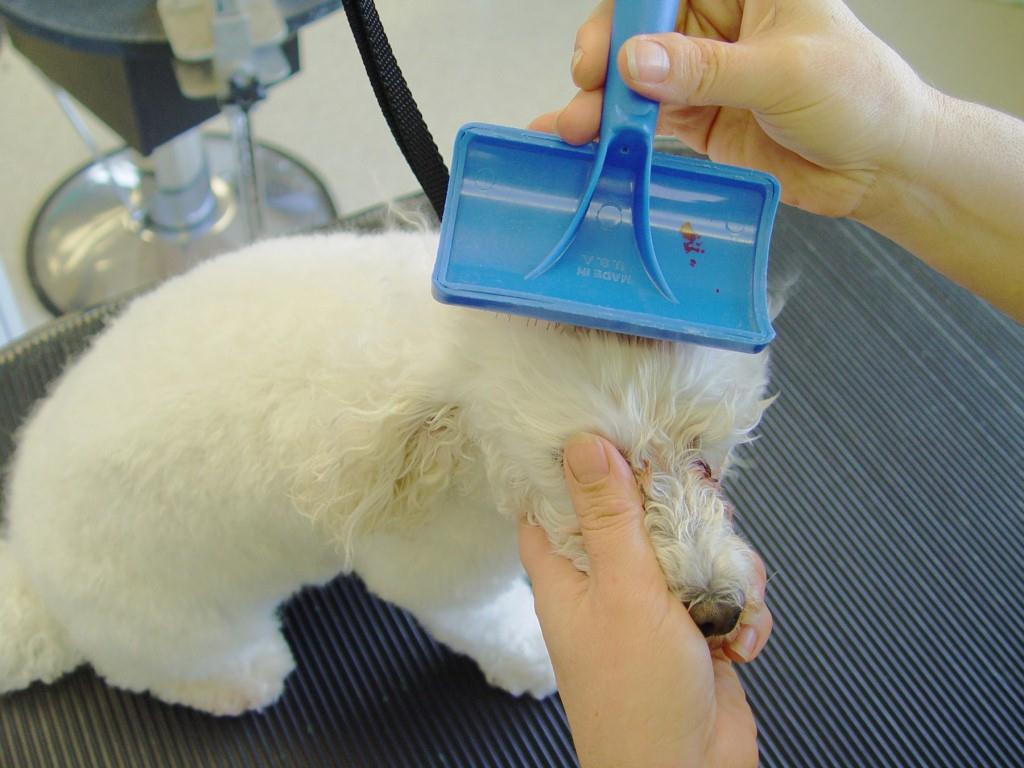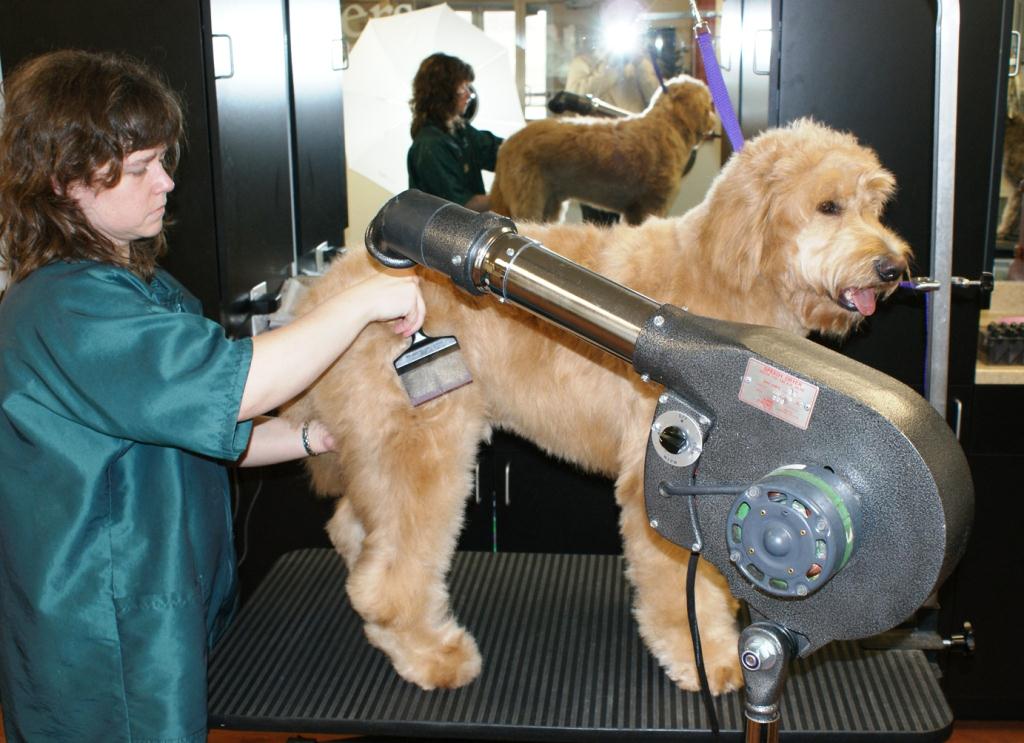There are five basic drying techniques that professionals use on pets. They are based on size, coat condition, coat type, and personality of the pet. The coat type often will dictate which technique is used to produce the highest quality result. The different drying methods are:
- Towel Drying
- High-Velocity Drying
- Stretch Drying
- Kennel Drying
- Blanket Drying
Today I’m going to focus on the most important drying method to master – stretch drying techniques. The term ‘stretch drying’ is also referred to as ‘fluff drying’. The two terms can be used interchangeably. Becoming proficient at this drying method will increase the quality of your grooms while decreasing the amount of time it takes to groom each dog. Bottom line: that’s money in your pocket!
Stretch Drying
To get a quality finish on most clipper and scissor finishes, the coat needs to be as straight as possible. The goal with stretch drying is to remove the natural wave or curl from the coat. Typically, stretch drying is used in conjunction with high-velocity drying. It removes the last bits of stubborn curl while getting a coat dry. It is also a good drying option for those pets that do not tolerate a high velocity dryer well, especially around the head area.
Stretch drying uses mild, warm air with rapid, light brushing only where the air is striking the coat. It’s like the reverse of using a human curling iron, where you want to hold the hair around the iron for long time to get a tight curl. There should be between one and four brush strokes per second depending upon the length of the hair. The brushing technique together with the warm air sets the coat straight and gives the fluffy appearance. The better the stretch dry, the faster and easier it will be to finish the trim. A well-executed stretch dry is the only way to get a beautiful finish on a hand-scissored coat.
Dryers used in stretch drying will have a heating element that creates air temperatures from warm to very hot. Always be aware of the air temperature out of the dryer. Air that is too hot could be uncomfortable for the pet and, at worst, may burn its skin.
There are stand dryers designed for this process or a small, hand-held human hair dryer with side air vents can be used. The small, hand hair dryers normally are attached to the stylist’s waist or held in a bracket that hangs from the neck to place the dryer at chest level.
Brush selection is based on the coat texture of the pet and the length of the fur. On most pets, a heavy slicker brush used with light strokes is preferred. If the pet has extremely delicate skin and/or a short fine coat, a soft slicker will be the brush of choice.
Start on shortest coat on the body that needs attention, moving forward over the body of the dog towards the head. Next, work on fluffing the rear legs. Proceed to the front legs and finish with the head, ears, and tail. Work only in the area where the air is striking. Make your brush strokes swift and light, one to four strokes per second based on coat length. When dealing with a heavy coated pet, line brush the area where the air strikes. Remember, the goal is to straighten the coat. Don’t move to the next area until the coat is as straight as possible and the fur is bone dry. Straightening some coats will prove more challenging than others.

When working on the head, always cover the eye with a finger to prevent an accidental scratch from the brush. There are cases of pets receiving eye scratches from stylists who were careless with the slicker brush. This is obviously painful to the pet, and in the worst cases, can lead to blindness.
Where light matting is still left in the coat, the coat can be de-matted and stretch dried at the same time. If for some reason the mat cannot be removed, make a mental note to return to that area and remove it after finishing the drying, but before the finish clipping and scissoring.
On many coats, a pet hair spray will hold the coat straight, just as it does for people, and allows for more effective clipping and scissoring. Apply the spray as a final step in stretch drying. Lightly spray the section. Set the spray with the warm air as you quickly brush it in. Make sure all mats are removed before applying the hair spray.
It is important to master drying skills. There are several drying methods and combinations to choose from, based on coat type, trim, and pet tolerance. Incorrect techniques or careless attention to drying will waste more of a professional groomer’s time than almost anything else.
An active form of drying always will yield the best results. Having a beautifully clean and dried coat also will lessen the amount of time it takes to execute the final grooming procedures on a pet. It will help you earn you the highest scores in certification testing. It will help you win grooming competitions. But most importantly, pets that have beautifully prepared coats will create return clients for your business and save you time.



